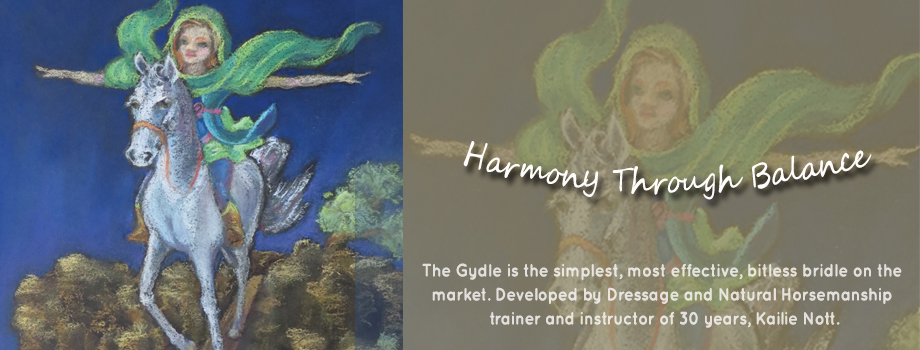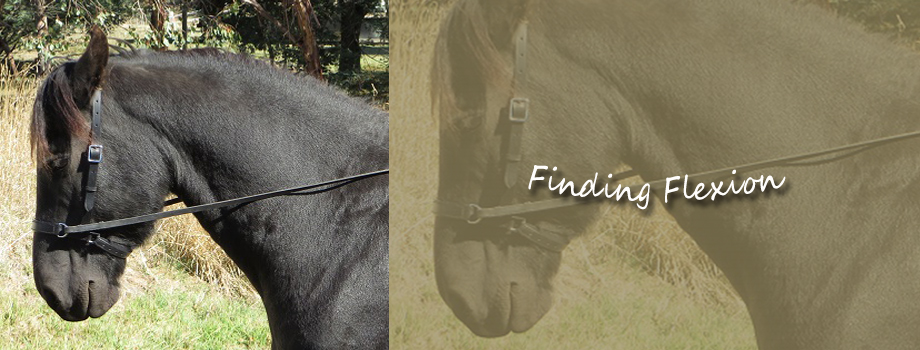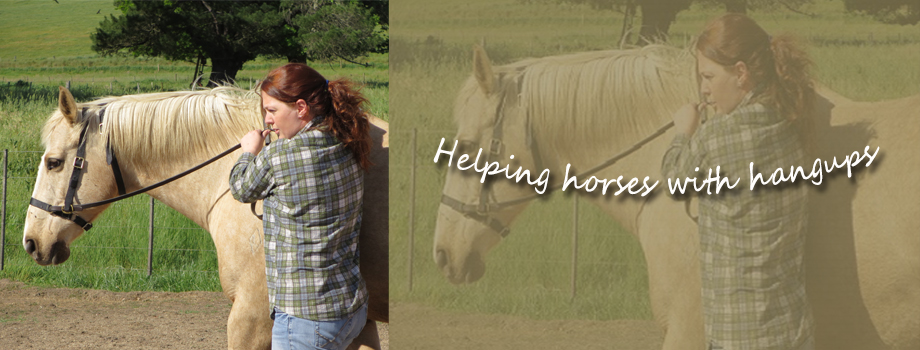Are your hands a weapon?
By Kailie Nott
Finding an animal’s weakness has enabled people to control many different species. We put collars around a dog’s neck, rings in a bull’s nose, ropes around a pig’s leg, and bits in a horse’s mouth. These techniques help us to disable the animal in some way and give us the capacity to control them for our own purpose. Many riders today are wondering which type of bit to use on their horse, or whether they should even use one at all.
There are a few people who have a natural affinity with horses, or who make it their life’s mission to really understand and work harmoniously with them. They dedicate much of their time and energy to understanding horses and to their own emotional and physical development. These are the few horsemen who can safely ride their horses without any equipment, in any circumstance and allow the horse full expression of his true beauty.
There are also many skilled riders who can communicate with their horses without the use of a bit, and some without any equipment on their horse’s heads at all. Many of these horses are fine to ride this way in a number of situations, but there would be circumstances where their riders would consider it risky to ride this way (e.g. along busy roads, or in large groups of excited horses).
A large group of people have only a few hours a week to spend with their horses. They have many things going on in their life that occupy their thoughts and time. They do not have the time to dedicate to becoming exceptional in this way with horses. Some people may have the time and energy, but their chosen activities require the use of a bit as part of the rules of participation e.g. racing, eventing, dressage.
 For a kinder alternative that allows effective contact and communication, try the new patented Gydle.
For a kinder alternative that allows effective contact and communication, try the new patented Gydle.
For those who ride with a bit, the challenge is to use it like a wand, to help create magic, rather than as a weapon to force the horse into submission. Bits offer riders a way to control their horses so they may give their horses interesting and varied lives. Bits can serve as a communication tool as well as help show a horse how to carry the rider more easily and athletically. The bit allows riders to refine their aids and make precise changes to the horse’s way of going. Riders can change the horse’s shape, balance and speed to best suit the next thing he is about to do (turn, jump, change gait). Use of the bit enables the rider to help position the horse’s body for gymnastic exercises that develop his strength and suppleness. Riders can be clear about exactly where they want the horse to go and so keep him safe and confident. These things require more skill to achieve without the help of the bit.
By understanding a little psychology, and being in control of our own behaviour and balance on a horse, a bit can be a form of communication, not torture. All bits create discomfort from which the horse seeks relief. It is up to the rider to be clear about which action on the horse’s part gives him the relief. The rider does this by being quick to release the pressure on the slightest sign of the desired action, and by being consistent about which action relates to which pressure. If the horse gets no relief, or cannot associate the rider’s behaviour with a comfortable outcome for himself, the horse will become confused or scared and will start showing undesirable behaviours. If the horse, for all his trying, cannot find any consistent meaning to the rein aids, then he will guess (at best) or ignore the rider and do his own thing. If he is going to be uncomfortable no matter what, then he may as well do as he pleases.
Many good-natured horses switch off and become robotic, sometimes only giving the rider any real trouble when taken into unfamiliar circumstances. People often only want to ride these horses in the arena, as they (both) feel unsafe elsewhere. The horse may appear well trained on the arena, but the training is limited. These horses do not need a ‘stronger’ bit when they are out, but a better understanding of the aids and more confidence in their rider and his ability to keep them safe.
At this point, many people see the horse as ‘naughty’ and resort to a ‘stronger’ (more painful) bit rather than looking to their own behaviours and seeking to improve their training. Really good trainers never resort to ‘stronger’ bits but, if anything, are more likely to search for a bit the horse finds more comfortable. They will also consider whether the horse has emotional reasons (e.g. isolation issues), or physical reasons for his ‘bad’ behaviour (teeth, dietary, health or muscle problems), or whether they need to change the training program or their techniques in order to help the horse.
When the horse is emotionally over-faced, the rider often feels they need to pull harder or even jerk on the reins. This may help in the short term but does little to help the long-term understanding of the rein aids or maintain the horse’s trust in your hands. Over time, the horse gets more scared and confused and as his behaviour worsens riders use increasingly forceful and painful methods of control in the form of more painful bits and gadgets. What they really need is more understanding and a greater repertoire of techniques.
There are two main types of bits: jointed bits (snaffles), and curb (leverage) bits, with most other bits being a variation of one of these. Snaffles have at least one joint on the mouthpiece, with rings to hold the reins attached at each end. Curb bits are generally unjointed, usually with port (curve for the tongue to fit under), and have shanks attached at the ends as well as a strap that goes under the horse’s chin. The reins generally attach at the bottom of the shanks, but some versions of this bit have different options along the shank.
The main purpose of the snaffle is to bend the horse laterally (sideways). The joint allows the rider to put more pressure on one side of the horse’s mouth than the other. Used badly, snaffle bits can pinch the tongue, nutcracker up against the horse’s palate, and push down on the bars of the mouth, causing pain and even injury.
The main purpose of the curb is to bend the horse vertically. The shanks tilt back when pressure is applied to the reins, causing the curb chain to tighten under the chin, the mouthpiece to tilt up into his palate, the bit to push down on the bars, and a downward pressure on the poll via the cheek pieces pulling on the headpiece. These actions can also be very painful and injure the horse.
In all cases, the action of the reins only works because the horse has learned which way to move to avoid the pressure. Without clear and consistent training in the rein aids, or by putting the horse in situations he is not ready to deal with and becoming heavy handed with the reins to try to cope, the horse will become confused and/or fearful and his behaviour will deteriorate. A more severe bit may appear to work in the short term as the horse tries to escape even more pain, but it does not help the horse’s confidence in you and often deteriorates to the point the horse is almost unrideable. The answer lies in taking the necessary time to re-educate the whole horse, not just the mouth.
The mouth is the most sensitive part of the horse that we use to communicate with, and so no matter what other aids you may be giving the horse, he will protect his mouth first. Many horses are developing back problems as riders use the reins to hold the horse’s head in such a way that the horse can no longer move freely. Riders then use stronger leg aids or spurs to get the ‘lazy’ horse to move forward. His back and neck muscles are in a state of tension and become fatigued, which he tolerates over any extra pain in his mouth. Some horses ‘zone out’ to cope, while others eventually become nappy, rear or show other more expressive ways of not coping.
Many horses are breaking down from being forced, by the use of the reins, to move in ways that their bodies and minds are not ready for. Horses whose heads are being held in by the reins are neither using their bodies nor carrying our weight efficiently, and cannot show the true beauty of their athleticism and controlled enthusiasm under a rider. Unfortunately, too many of us are not recognising this common facade and are impressed by a horse based on the appearance of the front end. How well would these horses go if their reins were made of a single cotton thread? Do these horses look happy in their activity, or are they swishing their tails or grinding their teeth? For all these riders’ good intentions, their use of the bit is more like a weapon than a wand.
In good hands, bits are a very useful tool in helping horses understand what we want and how to balance themselves better under the rider’s weight for the action required. The bit can be used with delicacy by a rider who understands how to build the horse’s confidence and trust in many situations without force. A good horseman knows that communication involves more than just the reins and basic use of the legs. He will use his whole body to subtly communicate with the horse and develop the relationship and confidence from the ground, when mounted and in different situations. For these riders, the bit is a precise tool that helps add clarity to the aids and finesse to the movement. The bit is like a delicate magic wand.
For a kinder alternative that allows effective contact and communication, try the new patented Gydle.
Please contact:
Jo Sheval for more details
0478 7111 80
45 Connors Lane, Seville VIC 3139, Australia

